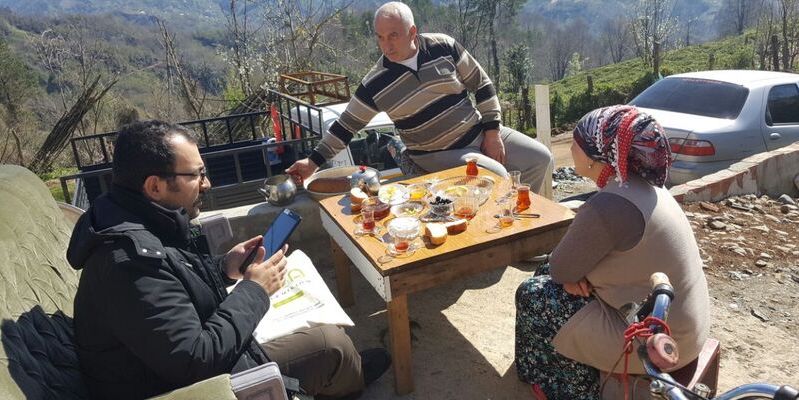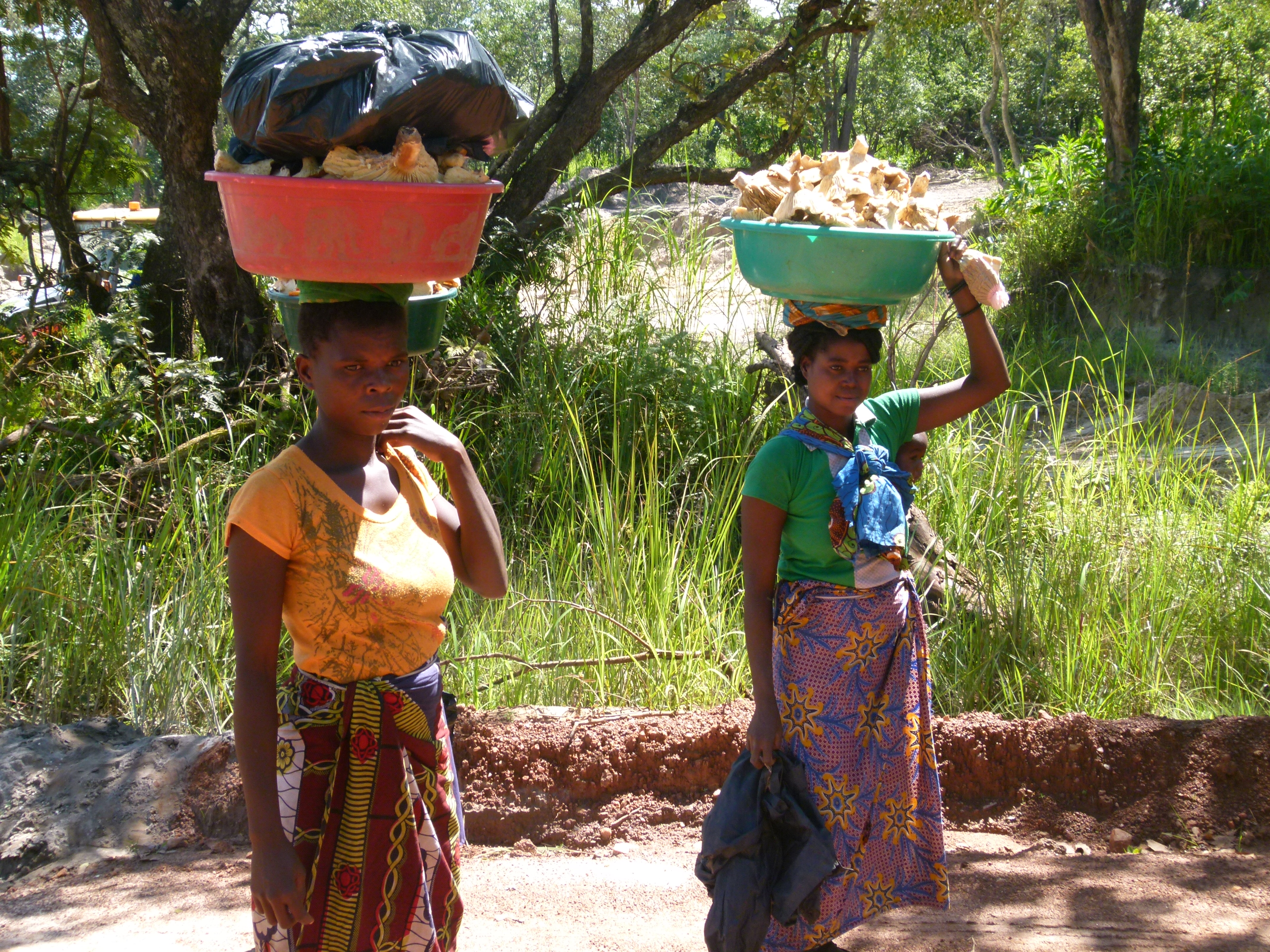Forest SWIFT

New tool to deliver swifter, better data on forests-poverty linkages
Q: What's better than having accurate, detailed and widely representative data?
A: Data that is accurate, detailed, widely representative - and frequent.
In fact, frequent data allows us to create not just a snapshot of our world, but to tease out complex patterns developing over time, and to make predictions into the future. This kind of information has never been more important for forests, which are at the heart of many sustainable development efforts, from the Paris Climate Agreement to the Sustainable Development Goals.
We know that forest resources are crucial to some 1.3 billion people worldwide, and that forests store over a billion tons of carbon. But we also know that climate change, demographics, migration, economic trends, and many other factors have significant impacts on forests and the people who, directly or indirectly, rely on them.
Consequently, building an in-depth understanding of how poor communities depend on forest resources is critical to developing policies and programs that simultaneously enhance those benefits and conserve habitats. To go about this, the World Bank’s multi-donor Program on Forests (PROFOR) previously partnered with a number of organizations to produce a “Forestry Sourcebook,” a survey tool aimed at collecting detailed level data about how people use forest resources.
The one challenge of the sourcebook approach, however, is that its implementation relies on the rollout of national-level household surveys – a necessarily complex and costly undertaking that occurs every three years as part of the Living Standards Measurement Survey (LSMS). So in order to complement the information gathered through the sourcebook's forestry module, PROFOR is also funding the development of a quicker, cheaper tool: the Forest Survey of Wellbeing via Instant and Frequent Tracking (Forest-SWIFT). It combines statistical methods with in-person interviews to provide robust measures of forest dependence and poverty, and uses tablets or smart phones so that data can then be rapidly collated and analyzed.
“Compared to the LSMS, Forest-SWIFT can be carried out in less time in the field and at a fraction of the cost, since the questionnaire can be done in less than 30 minutes,” explained Emilie Perge, a World Bank Economist leading the project. “The ultimate outcome of the Forest-SWIFT is to inform how forest projects are implemented, how to target beneficiaries, and how to monitor outcomes.”
So far, the Forest-SWIFT methodology has been piloted in Turkey, where Perge worked with Senior Environmental Economist Craig Meisner to model poverty and forest reliance. Some 7 million people – 40 percent of the rural population - live in Turkey's forest villages, and while they depend heavily on forests for income, they also suffer from below-average poverty rates.
“Forest villagers are declining in numbers due to large-scale urbanization in Turkey,” Meisner said. “We undertook a nationally representative survey of forest villages and found that forestry is a critical source of income for the poorest households, but is still a low-productivity activity. The results highlight the potential of forest cooperatives as a helpful tool for stemming migration, as well as the need to boost productivity and jobs in the forestry sector.”
Findings from the Turkey activity have been aggregated into a Forest Policy Note for Turkey's national forestry agency, and will be used to revise the country's new five-year forest strategy.
There are also plans to implement the Forest-SWIFT in Argentina, as part of an activity led by Senior Natural Resources Management Specialist Peter Jipp. The activity will focus on the Chaco Eco-region, where poverty and deforestation rates are among the highest in the country. With 1.5 million hectares of forested land being converted to agriculture between 2006 and 2011, communities are losing valuable ecosystem services and sources of income.
“Evidence from other countries suggests that the poor rely on forests for 25-35 percent of their income, but there are no such statistics for Argentina,” said Jipp. “This study will help fill that knowledge gap. Communities of indigenous and criollo origin will be a particular focus, as 70 percent of them live below the poverty line. The Forest-SWIFT will also support an impact evaluation of Argentina's Forest Fund, to assess how successful it was in preventing forest loss and land-use change.”
In addition, there is the possibility of applying the tool to forest and poverty data from Mozambique, and hopefully to other interested countries as well.
“There are so many cash and non-cash benefits that poor communities get from forests,” noted Werner Kornexl, Senior Environmental Specialist and PROFOR Manager. “This data can help us understand the real value of forests and improve policies to support poverty reduction efforts while also find new solutions for a more prosperous forest-based industry.”
For stories and updates on related activities, follow us on twitter and facebook , or subscribe to our mailing list for regular updates.
Last Updated : 06-16-2024

Share
Related Links
Poverty-Forests Linkages Toolkit
New tool to deliver swifter, better data on forests-poverty linkages
The role of forests in achieving the twin goals- A case study for the Phillipnes
Bringing Forest and Poverty into Focus in Argentina
Attachments
Forest contribution to poverty alleviation evidence map.pdf
Keywords
Understanding Forests’ Contribution to Poverty Reduction
PROGRAM SUMMARY
The overarching goal of this project is to support the World Bank Group's efforts to promote sustainable poverty reduction in forests and to work with governments and the international community to promote the use of forests and their resources to reduce poverty and boost shared prosperity.
CHALLENGE
While knowledge is increasing about forests as a source of day-to-day subsistence and as a safety net in times of need, much less is known about the extent to which forests can provide a pathway out of poverty. Currently, there is no systematic understanding of how forests may help the poor move out of chronic poverty and/or improve their current economic circumstance.
Knowledge gaps regarding the role of forests in poverty alleviation are often conceptual, but even more importantly, empirical. Frameworks such as those focusing on ecosystem services, or those elaborating different types of contributions of forests to human welfare can be used to structure analyses of forest-people linkages. But there are also critical knowledge gaps about forests as a source of employment and pathway out of poverty challenges in collecting relevant information on the contribution of forests to household well-being. Difficulties of measurement, valuation, and enumeration thwart efforts to capture this contribution. In particular, the remoteness of many poor, forest-reliant households and the length of time required to complete many surveys are barriers to collecting adequate information, which contributes to the lack of consolidated knowledge available on the linkage between forests and a pathway out of poverty.
APPROACH
This program employs four pillars that build on earlier efforts by PROFOR and other partners and aims to: (i) consolidate what is known about forest-poverty linkages, (ii) generate new knowledge on this interaction, (iii) improve how we measure household use and dependence of forests, and (iv) share these results with a broad set of policy makers and practitioners. The work will be conducted in close collaboration with an external reference group of advisory experts and key institutions that includes representatives from the organizations, such as the Center for International Forestry Research (CIFOR), Food and Agriculture Organization (FAO), International Union for Conservation of Nature (IUCN), the International Centre for Research in Agroforestry (ICRAF), the Forest Stewardship Council (FSC), International Tropical Timber Organization (ITTO), International Union of Forest Research (IUFRO), as well as universities, policy institutes, foundations, and non-governmental organizations (NGOs).
With the four pillars guiding the work, the main program outputs will be the following:
(1) A knowledge review, focusing on synthesizing evidence on the impacts of forestry policies and programs on poverty reduction in evidence maps, and to explore this evidence in an in-depth knowledge review.
(2) A conceptual framework will be developed, including a common set of definitions and core forest-poverty linkages to be explored.
(3) Country studies, bringing together and consolidating already on-going projects. The program will serve to streamline these studies as far as possible, to maximize comparability and learning.
(4) Development and field testing of the Forest-SWIFT (formerly called forest-poverty app) in Tukey, Argentina, and Mozambique (tbc), building on ongoing work on the forestry module of the Living Standard Measurement Study (LSMS).
(5) Dissemination and outreach will be targeted to specific internal and external users and audiences, and will include setting up a reference group with external experts.
For stories and updates on related activities, follow us on twitter and facebook , or subscribe to our mailing list for regular updates.
Last Updated : 06-16-2024








